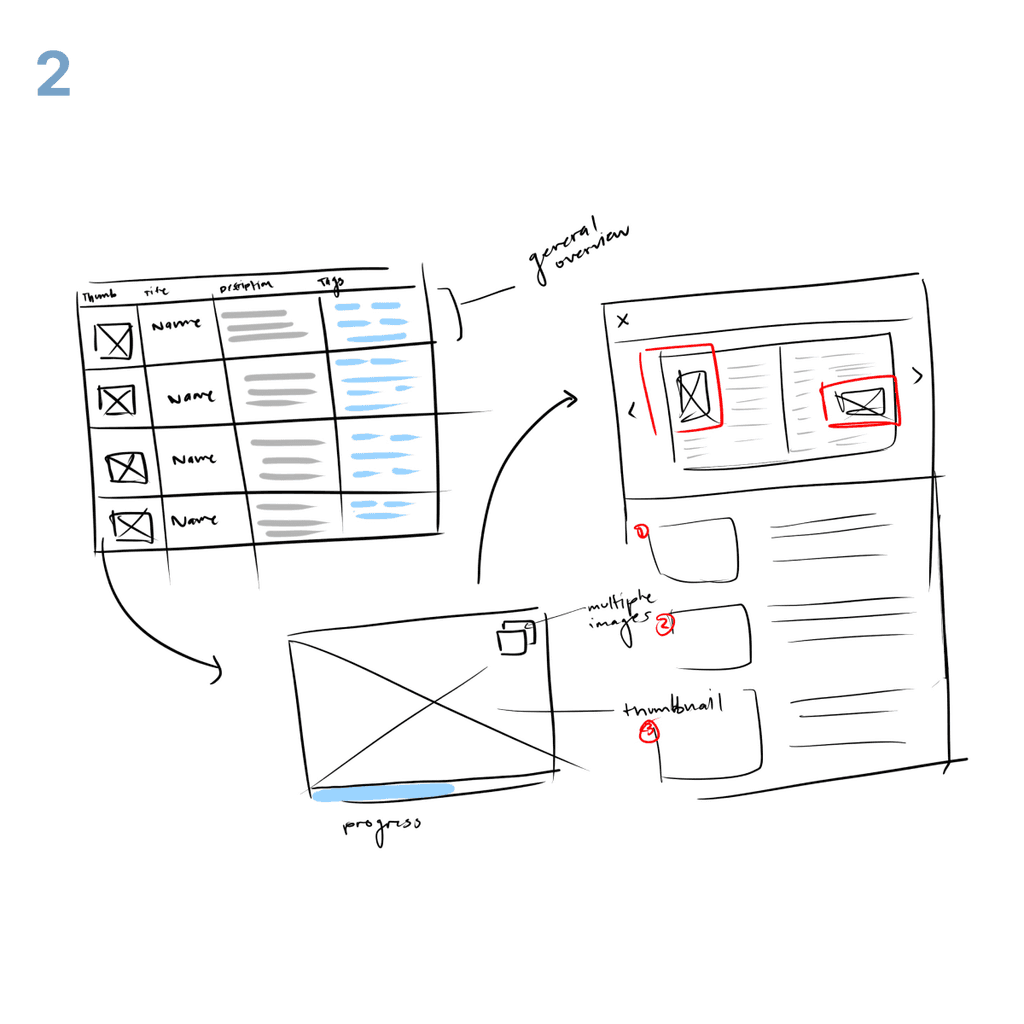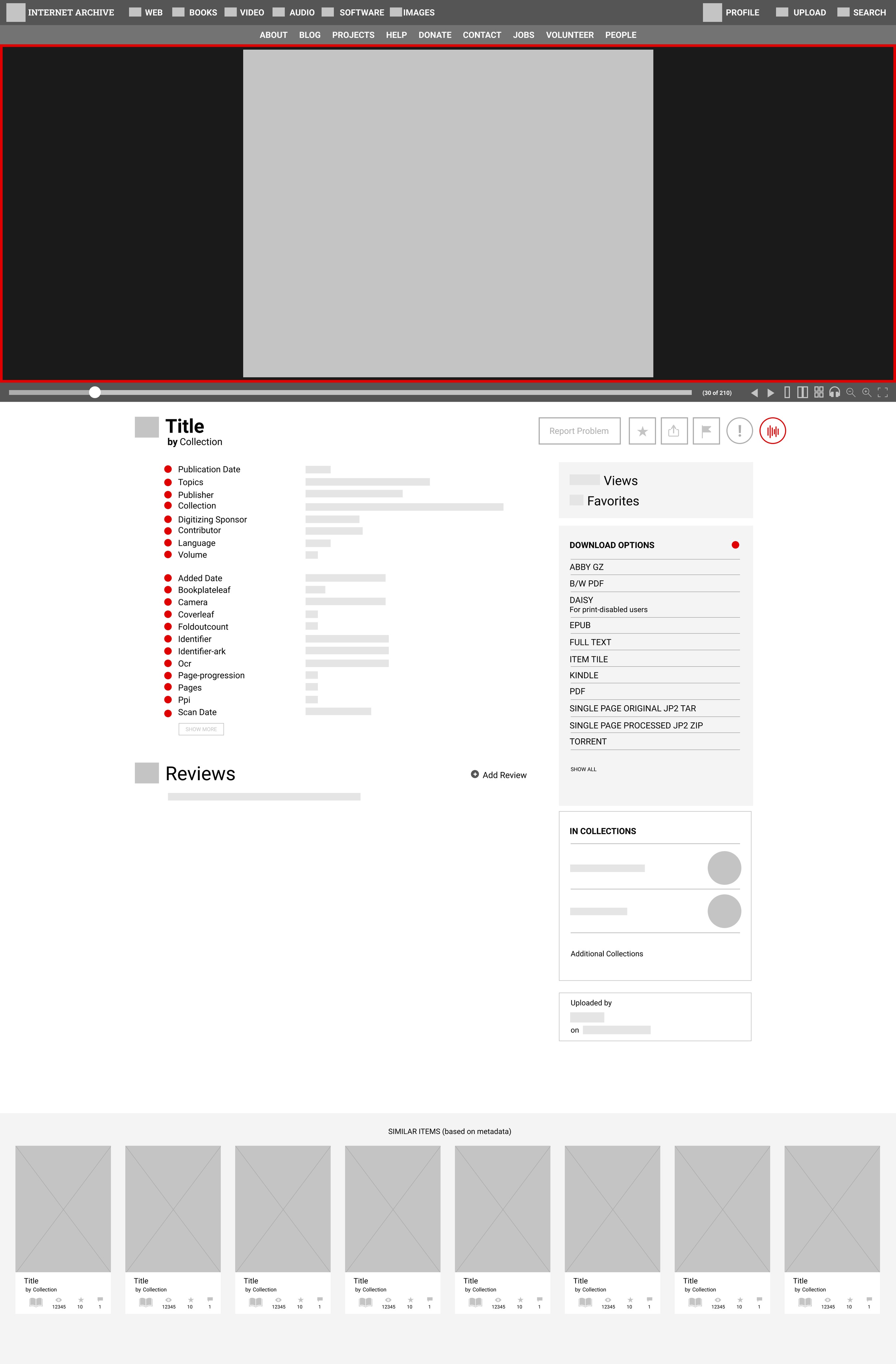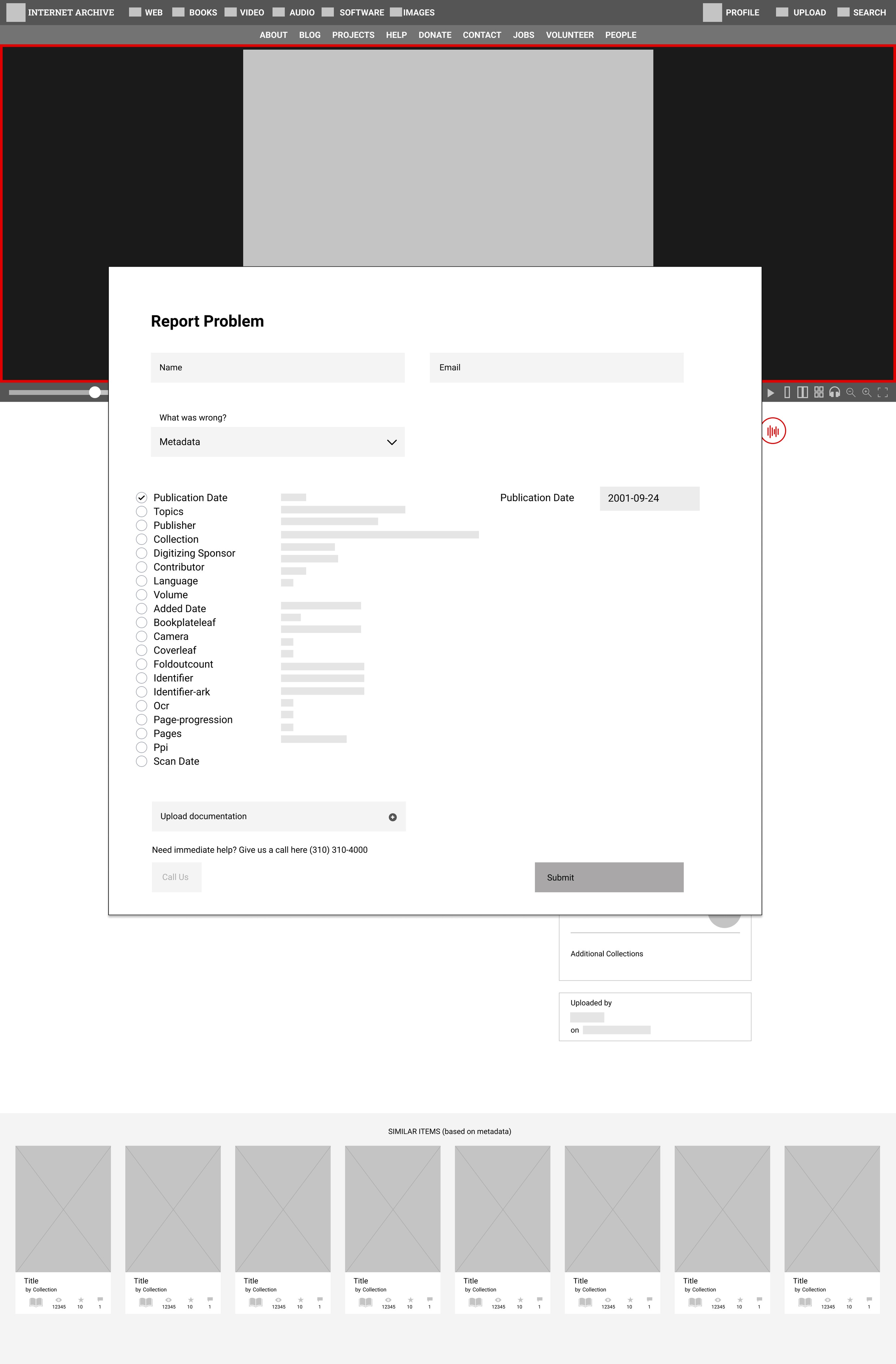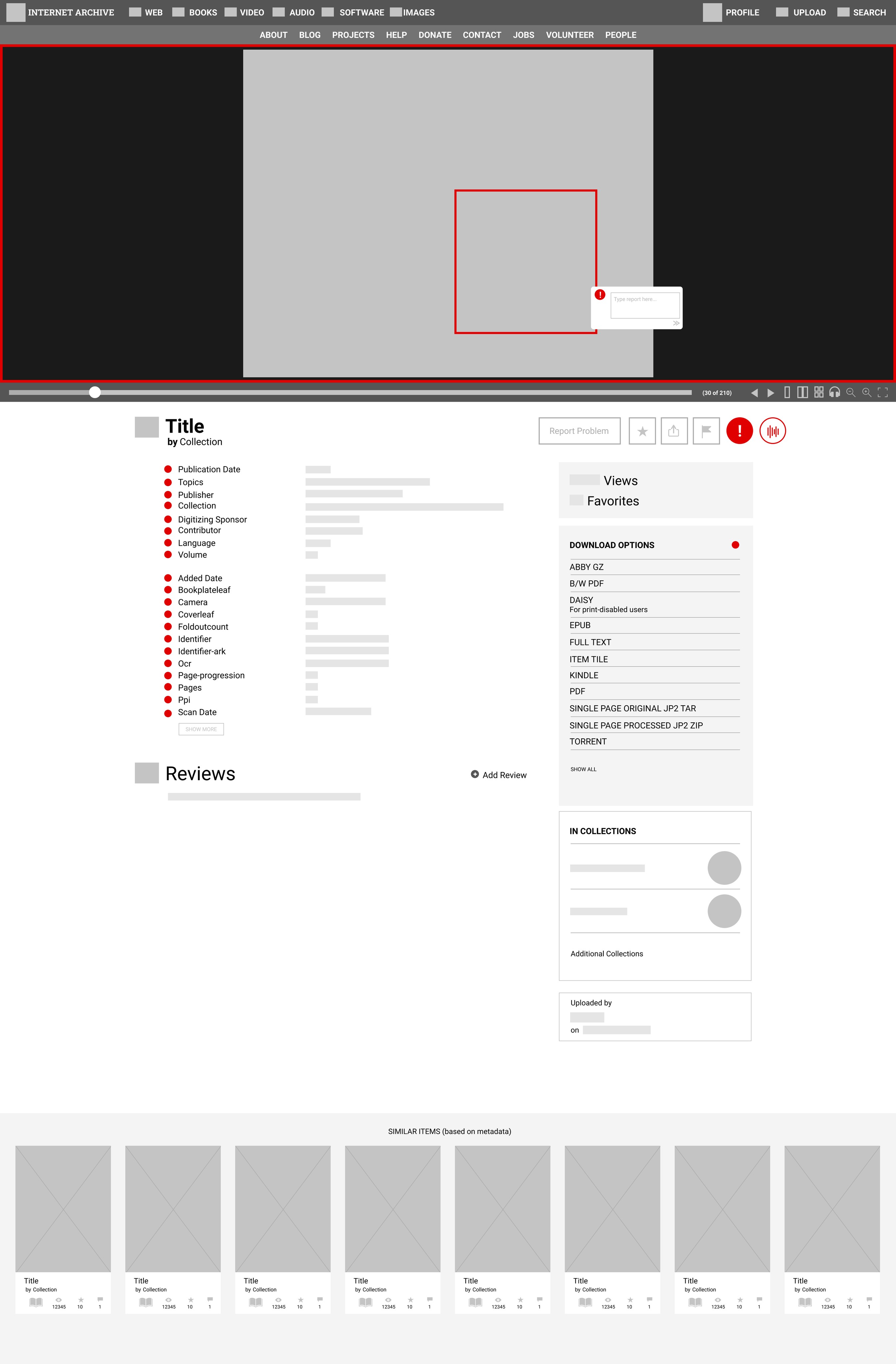
ArtCenter College of Design
14 Weeks
Double Check
How might we organize, export, and transfer multi-media artifacts and ensure compatibility with third-party assistive tools?
Role
UX Researcher and Designer
Team
2 Designers
#accessibility

ArtCenter College of Design
14 Weeks
Double Check
How might we organize, export, and transfer multi-media artifacts and ensure compatibility with third-party assistive tools?
Role
UX Researcher and Designer
Team
2 Designers
#accessibility

ArtCenter College of Design
14 Weeks
Double Check
How might we organize, export, and transfer multi-media artifacts and ensure compatibility with third-party assistive tools?
Role
UX Researcher and Designer
Team
2 Designers
#accessibility
Overview
Overview
Overview
Problem
Researchers have a difficult time accessing artifacts from the archive due to flat information hierarchy, poor compliance with web accessibility, and incomplete publication of artifacts.
Problem
Researchers have a difficult time accessing artifacts from the archive due to flat information hierarchy, poor compliance with web accessibility, and incomplete publication of artifacts.
Problem
Researchers have a difficult time accessing artifacts from the archive due to flat information hierarchy, poor compliance with web accessibility, and incomplete publication of artifacts.
Design Challenge 1
How might we design a system where both archivists and researchers are able to build on a more accessible archive experience?
Design Challenge 1
How might we design a system where both archivists and researchers are able to build on a more accessible archive experience?
Design Challenge 1
How might we design a system where both archivists and researchers are able to build on a more accessible archive experience?
Design Challenge 2
How might we ensure that all published artifacts meet web compliance?
Design Challenge 2
How might we ensure that all published artifacts meet web compliance?
Design Challenge 2
How might we ensure that all published artifacts meet web compliance?
Solution
Providing archivists and researchers a robust tracking system that prioritizes accessibility ensures that cultural heritage is preserved and shared in a way that respects and accommodates the needs of all individuals. To do this, there must be a checks-and-balances system that indicates whether or not an artifact meets web compliance and is accurately described by the provided metadata.
Solution
Providing archivists and researchers a robust tracking system that prioritizes accessibility ensures that cultural heritage is preserved and shared in a way that respects and accommodates the needs of all individuals. To do this, there must be a checks-and-balances system that indicates whether or not an artifact meets web compliance and is accurately described by the provided metadata.
Solution
Providing archivists and researchers a robust tracking system that prioritizes accessibility ensures that cultural heritage is preserved and shared in a way that respects and accommodates the needs of all individuals. To do this, there must be a checks-and-balances system that indicates whether or not an artifact meets web compliance and is accurately described by the provided metadata.
Solution
Solution
Solution
Accessibility Checker
Design Lead: Mattie Lee
Accessibility Checker
Design Lead: Mattie Lee
Accessibility Checker
Design Lead: Mattie Lee
Submitting Requests on a Single Artifact
Design Lead: Charlene Joy Dela Cruz
Submitting Requests on a Single Artifact
Design Lead: Charlene Joy Dela Cruz
Submitting Requests on a Single Artifact
Design Lead: Charlene Joy Dela Cruz
Submitting Requests on Multiple Artifacts
Design Lead: Mehar Nangia
Submitting Requests on Multiple Artifacts
Design Lead: Mehar Nangia
Submitting Requests on Multiple Artifacts
Design Lead: Mehar Nangia
Design Process
Design Process
Design Process
Double Diamond: Mixed Methodologies
The following diagram represents the divergent and convergent thinking that occurs. Though the format of the project is presented in a linear fashion, I would often go back and forth between phases as our knowledge and insights grow.
Double Diamond: Mixed Methodologies
The following diagram represents the divergent and convergent thinking that occurs. Though the format of the project is presented in a linear fashion, I would often go back and forth between phases as our knowledge and insights grow.
Double Diamond: Mixed Methodologies
The following diagram represents the divergent and convergent thinking that occurs. Though the format of the project is presented in a linear fashion, I would often go back and forth between phases as our knowledge and insights grow.
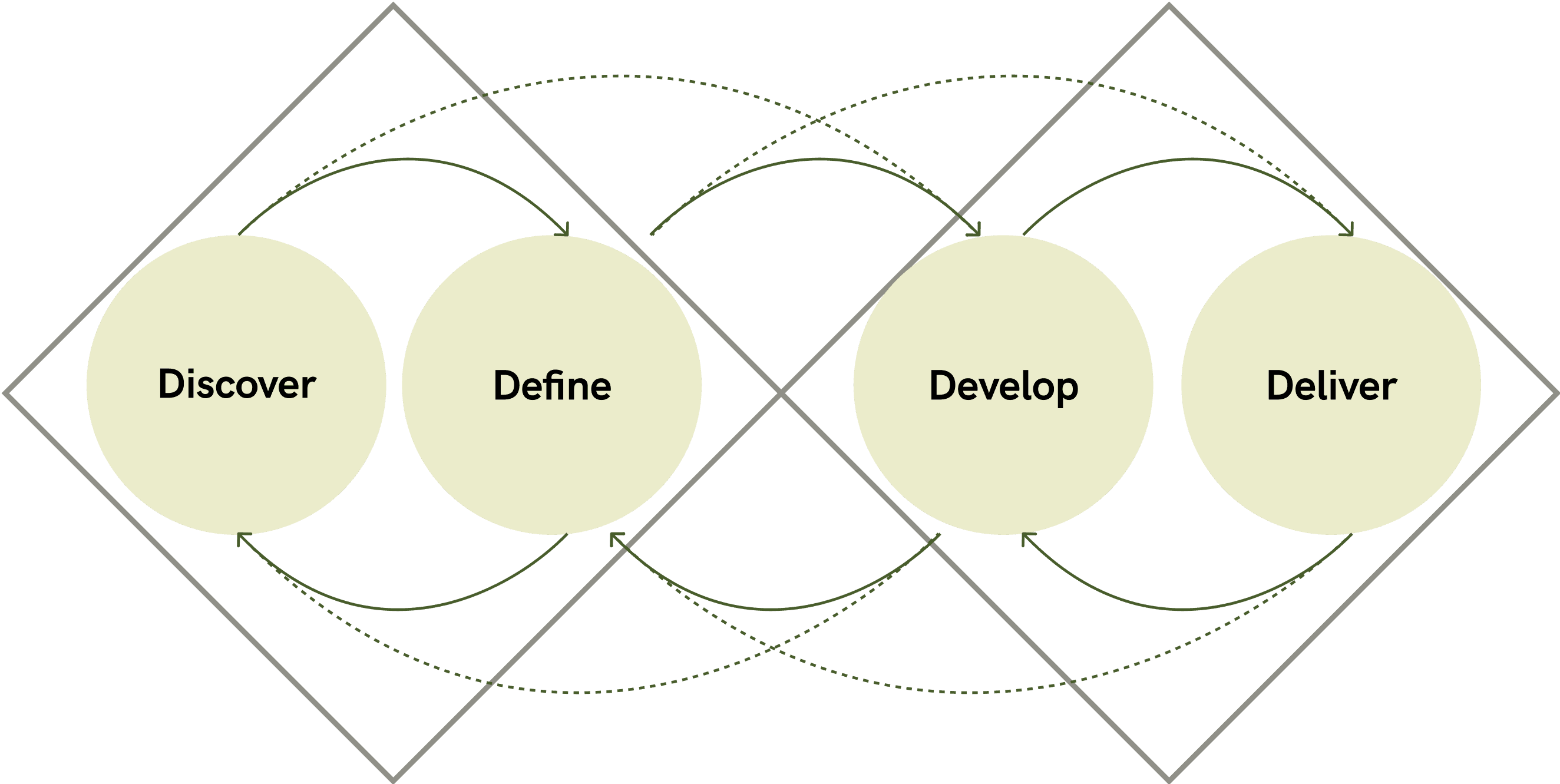


Discover
Contextual Inquiry
User Research
Stakeholder Interviews
Define
Synthesis
Problem Definition
Affinity Diagrams
User Personas
Develop
Design Workshops
Storyboards
Wireframes
Participatory Workshops
Storyboards
Wireframes
Deliver
High Fidelity
Mockups
Behind the Scenes
Background Research
I looked into the tasks that archivists needed to complete from acquiring an artifact to publishing it to the archive. Understanding the digitization lifecycle informed the list of research questions asked during 1:1 interviews with archivists and librarians.
Background Research
I looked into the tasks that archivists needed to complete from acquiring an artifact to publishing it to the archive. Understanding the digitization lifecycle informed the list of research questions asked during 1:1 interviews with archivists and librarians.
Background Research
I looked into the tasks that archivists needed to complete from acquiring an artifact to publishing it to the archive. Understanding the digitization lifecycle informed the list of research questions asked during 1:1 interviews with archivists and librarians.
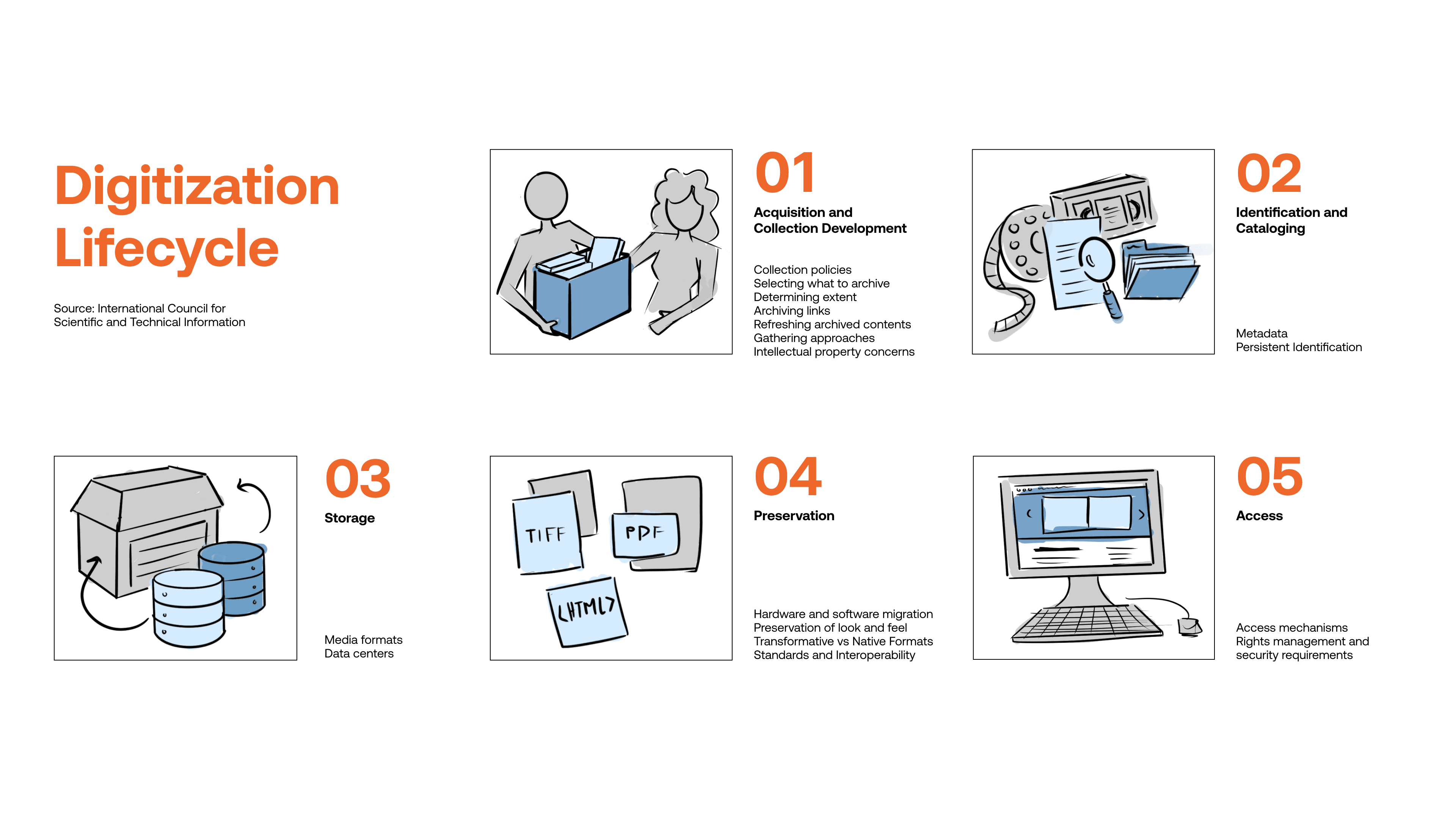


Researcher
Pain Points
Navigating through an archive due to poor information hierarchy
Finding artifacts in archive due to poor search engines and tagging system which leads to lack of awareness of archive contents
Understanding artifacts due to insufficient metadata published
Researcher
Pain Points
Navigating through an archive due to poor information hierarchy
Finding artifacts in archive due to poor search engines and tagging system which leads to lack of awareness of archive contents
Understanding artifacts due to insufficient metadata published
Researcher
Pain Points
Navigating through an archive due to poor information hierarchy
Finding artifacts in archive due to poor search engines and tagging system which leads to lack of awareness of archive contents
Understanding artifacts due to insufficient metadata published






Archivist
Pain Points
Providing accurate metadata for the artifacts submitted because they do not have the subject-matter expertise
Staying connected with researchers interfacing the archive due to poor communication systems in place (manual labor in sifting through emails, answering phone calls, word of mouth)
Archivist
Pain Points
Providing accurate metadata for the artifacts submitted because they do not have the subject-matter expertise
Staying connected with researchers interfacing the archive due to poor communication systems in place (manual labor in sifting through emails, answering phone calls, word of mouth)
Archivist
Pain Points
Providing accurate metadata for the artifacts submitted because they do not have the subject-matter expertise
Staying connected with researchers interfacing the archive due to poor communication systems in place (manual labor in sifting through emails, answering phone calls, word of mouth)
Hypothesis
Archivists are unable to keep up with the increasing requests to properly publish artifacts that meet accessibility standards due to resource constraints and insufficient institutional support. As a result, they often resort to publishing only the bare minimum information required for compliance, which inadvertently excludes people with disabilities from fully engaging with and benefiting from the historical materials.
Hypothesis
Archivists are unable to keep up with the increasing requests to properly publish artifacts that meet accessibility standards due to resource constraints and insufficient institutional support. As a result, they often resort to publishing only the bare minimum information required for compliance, which inadvertently excludes people with disabilities from fully engaging with and benefiting from the historical materials.
Hypothesis
Archivists are unable to keep up with the increasing requests to properly publish artifacts that meet accessibility standards due to resource constraints and insufficient institutional support. As a result, they often resort to publishing only the bare minimum information required for compliance, which inadvertently excludes people with disabilities from fully engaging with and benefiting from the historical materials.
Participatory Design Workshop
Our team and I collaborated with archivists and researchers with disabilities to identify which parts of our prototype aligns with their needs and current workflow. The goals of the workshop was to test our understanding in digitization process and identify main capabilities that best support our users' needs.
Participatory Design Workshop
Our team and I collaborated with archivists and researchers with disabilities to identify which parts of our prototype aligns with their needs and current workflow. The goals of the workshop was to test our understanding in digitization process and identify main capabilities that best support our users' needs.
Participatory Design Workshop
Our team and I collaborated with archivists and researchers with disabilities to identify which parts of our prototype aligns with their needs and current workflow. The goals of the workshop was to test our understanding in digitization process and identify main capabilities that best support our users' needs.



User Scenario
We walked through a scenario that reflects the archivist's tasks in the digitization cycle. Participants generally gave feedback in scenes where they experienced the most bottlenecks under tight deadlines due to external factors such as large-scale public events, unknown donors, poor communication systems, and more.
User Scenario
We walked through a scenario that reflects the archivist's tasks in the digitization cycle. Participants generally gave feedback in scenes where they experienced the most bottlenecks under tight deadlines due to external factors such as large-scale public events, unknown donors, poor communication systems, and more.
User Scenario
We walked through a scenario that reflects the archivist's tasks in the digitization cycle. Participants generally gave feedback in scenes where they experienced the most bottlenecks under tight deadlines due to external factors such as large-scale public events, unknown donors, poor communication systems, and more.



Mid Fidelity Wireframes
We walked through a scenario that reflects the archivist's tasks in the digitization cycle. Participants generally gave feedback in scenes where they experienced the most bottlenecks under tight deadlines due to external factors such as large-scale public events, unknown donors, poor communication systems, and more.
Mid Fidelity Wireframes
We walked through a scenario that reflects the archivist's tasks in the digitization cycle. Participants generally gave feedback in scenes where they experienced the most bottlenecks under tight deadlines due to external factors such as large-scale public events, unknown donors, poor communication systems, and more.
Mid Fidelity Wireframes
We walked through a scenario that reflects the archivist's tasks in the digitization cycle. Participants generally gave feedback in scenes where they experienced the most bottlenecks under tight deadlines due to external factors such as large-scale public events, unknown donors, poor communication systems, and more.
Results
Archivists are unable to keep up with the increasing requests to properly publish artifacts that meet accessibility standards due to resource constraints and insufficient institutional support. As a result, they often resort to publishing only the bare minimum information required for compliance, which inadvertently excludes people with disabilities from fully engaging with the artifacts.
Results
Archivists are unable to keep up with the increasing requests to properly publish artifacts that meet accessibility standards due to resource constraints and insufficient institutional support. As a result, they often resort to publishing only the bare minimum information required for compliance, which inadvertently excludes people with disabilities from fully engaging with the artifacts.
Results
Archivists are unable to keep up with the increasing requests to properly publish artifacts that meet accessibility standards due to resource constraints and insufficient institutional support. As a result, they often resort to publishing only the bare minimum information required for compliance, which inadvertently excludes people with disabilities from fully engaging with the artifacts.
Quote from Participant
“We don’t currently make items more accessible for people with disabilities and we only run Optical Character Recgnition (OCR) on pdfs ... we also never tested on screen readers...”
Quote from Participant
“We don’t currently make items more accessible for people with disabilities and we only run Optical Character Recgnition (OCR) on pdfs ... we also never tested on screen readers...”
Quote from Participant
“We don’t currently make items more accessible for people with disabilities and we only run Optical Character Recgnition (OCR) on pdfs ... we also never tested on screen readers...”
Conclusion
By embedding accessible design into workflows, organizations not only meet legal and ethical obligations but also cultivate a more inclusive and effective platform for all users, promoting a richer and more equitable experience across the board.
Conclusion
By embedding accessible design into workflows, organizations not only meet legal and ethical obligations but also cultivate a more inclusive and effective platform for all users, promoting a richer and more equitable experience across the board.
Conclusion
By embedding accessible design into workflows, organizations not only meet legal and ethical obligations but also cultivate a more inclusive and effective platform for all users, promoting a richer and more equitable experience across the board.



